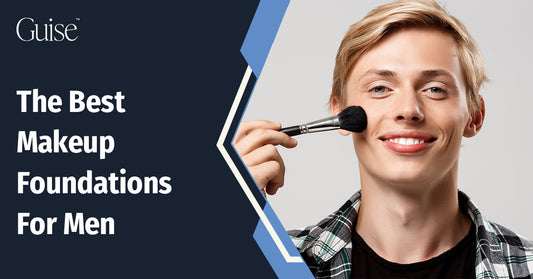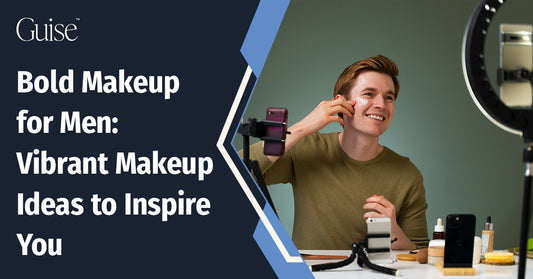Finding the right color-correcting palette can be daunting, especially if you're new to makeup. With so many skin options on the market, it is difficult to know which ones are best suited for your specific needs. Fortunately, this guide will provide all the information you need for choosing a color-correcting palette. We'll cover everything from understanding what each shade does and how they work together to finding the perfect one for your skin tone and type. Following our advice, you'll have no trouble finding a color-correcting palette that works for you!
What Is A Color Correcting Palette?
A color-correcting palette is a type of makeup that has different colors that work together to even out and fix skin flaws like discoloration, dark circles, redness, and a more sallow skin tone. Most color-correcting palettes combine shades of deeper skin tones, ranging from peachy pinks to blues and greens. By understanding how different colors work together to counteract one another, you can effectively use your color correctors to give yourself an even skin tone.
What Is the Purpose of Using a Color Correcting Palette?
The goal of a color-correcting palette is to fix certain flaws in the skin, like discoloration, dark circles, redness, and a dull appearance of medium skin, by using different colors that are meant to neutralize and fix those problems in oily skin. Here's a look at some purpose-specific color-correcting palettes:
Address Specific Skin Imperfections
A color-correcting palette can help with many skin flaws, like spots, dark circles under the eyes, redness, and a dull appearance. When parts of the skin get darker or lighter because of the sun, getting older, or other things, this is called discoloration. A lack of sleep, dehydration, and genetics often cause dark spots and circles. Redness can result from irritation, sunburns, or other skin conditions. And finally, sallowness is a yellowish hue, often due to age, stress, fatigue, or a poor diet.
Eliminate Unwanted Tones
In addition to addressing specific skin imperfections, a color-correcting palette can eliminate unwanted tones in darker skin. For example, if your skin has naturally yellow undertones, you can use a greenish-tinted color corrector palette to counter those undertones and create a more even complexion.
Create a More Even and Flawless Base
Using a color-correcting palette can also help you create a more even and flawless base for your makeup. By neutralizing discoloration, dark circles, redness, and sallowness in your skin, your foundation will look smoother and be less likely to settle into creases or appear cakey. It also helps to create a more natural finish that looks much more polished.
Reduce the Amount of Foundation and Concealer Needed
Using a color-correcting palette can also reduce the amount of foundation and concealer you need. Correctors can provide coverage in areas where foundation or concealer wouldn't reach when used correctly, creating a more even base with less product overall.
Enhance the Natural Beauty of Your Skin
Color-correcting palettes can help to enhance the natural beauty of your skin. By neutralizing undesired tones and correcting skin imperfections, you can achieve a healthy, glowing complexion without heavy makeup.
Why Is Choosing the Right Color-Correcting Palette Important for Mens’ Skin?
It is important to choose the right color-correcting palette for men's darker skin tones because not all palettes are designed to address the specific light skin tone concerns of men. Men often have different skin tones and needs than women, so finding a palette that caters to their unique needs is important. Below are some reasons why its important to choose the right palette for your needs:
Achieve Desired Results
The right color-correcting palette will help you achieve the desired results. Different shades of corrector can address different skin issues, so selecting a palette with colors suitable for your skin type and tone is important.
Complement Your Skin Tone
A quality color-correcting palette will also complement your skin tone. Choosing a too-light or too-dark corrector can make your complexion look unnatural. For example, if you have fair or medium skin tones, using a too-dark corrector will leave you with an obvious "mask" effect and visible lines where the corrector stops.
Avoid Unnatural Makeup Look
Men can avoid the dreaded "cakey" look by using a color-correcting palette. This is when the foundation or concealer looks too heavy or thick on the skin. This is often caused by applying too much product or using products that are not well-suited for one's skin tone and type. A quality color-correcting palette will help even skin tones and keep your makeup looking natural.
Protecting Your Skin
Men should consider using a color-correcting palette to protect their lighter skin tones from environmental aggressors. Correctors help neutralize the effects of oily skin types of sun damage and other environmental factors, so men must find formulas suitable for their skin type.
How to Choose the Right Color Correcting Palette
Choosing the right color-correcting palette for men can be tricky because so many options are available. Here is how to select the best one for your needs:
Skin Tone
The first step in selecting a color-correcting palette is determining your skin tone. You can do this by looking at the veins on your wrist; if they are blue, you have cool undertones; if they are green or yellow, you likely have warm undertones.
Skin Concerns
The next step is identifying your skin concerns and determining which colors to use to address them. If you have dark circles or discoloration, a green-tinted color can help to neutralize the darkness of eye circles and create a more even complexion. Green is known as a color corrector because it helps counteract the redness of the skin, so it can treat acne scars or other areas of redness. It can also be used to help brighten the complexion.
The Texture of the Product
Consider the texture of the product you are using. A good color-correcting palette should have a lightweight, buildable, creamy formula that is easy to blend and doesn't cake up on the skin. Look for products specifically designed for men's skin, as they are usually oil-free, light in texture, and formulated to address skin concerns specific to men.
Pigmentation
Consider the pigmentation of the product. A good color-correcting palette should have colors that are highly pigmented and blendable. This will help you achieve the desired look without relying on too much product.
Brand Reputation
Finally, consider the reputation of the brand. Reviewing reviews and researching the brand can help you determine if they offer quality products that will address your skin concerns. Additionally, look for brands that offer color-correcting palettes specifically designed for men.
Using A Color-Correcting Palette On Your Skin: A Step-by-Step Guide
Using a color-correcting palette is a good way to get rid of skin problems and make your makeup look natural. Before you begin, select the right shade of corrector according to your skin tone and concerns. Here are the steps for using a color-correcting palette on your skin:
Step 1: Prep the Skin
To prep the skin, start by cleansing and gently exfoliating to remove any dirt or debris from the skin's surface. Before applying your color corrector, further prep the skin with a moisturizer and primer. This will ensure the product goes on smoothly, prevents creasing, and provides a smooth base for the color-correcting palette.
Step 2: Choose the Shade
Once your skin is prepped, it is important to choose the right shade of color corrector for your skin tone and concerns. It is best to choose shades of color correcting cream that are slightly lighter than your skin tone, as they will be more effective in counteracting discoloration.
Step 3: Apply the Color Corrector
Using a beauty sponge or brush, apply the corrector to the areas that need coverage. Start with small amounts and build up from there if needed. Blend in circular motions until the product blends into the skin for a more natural-looking and flawless finish throughout.
Step 4: Blend and Set
With your fingers or a brush, use light, circular motions to blend the color correctors into the skin until they are evenly spread and look natural. Pay attention to any areas that need more coverage, such as dark circles or areas of discoloration, so that you achieve an even complexion. Once you've blended the color correctors, set the look with a lightweight setting powder.
Step 5: Finish with Concealer and Foundation
Once your color correction is complete, remove the look by applying a concealer or foundation to eliminate discoloration or redness. Choose a product specifically formulated for men's skin to ensure a creamy texture on the skin. Finally, set the look with a light dusting of translucent powder for added staying power like a celebrity makeup artist.
Step 6: Clean Your Palette
Once you are finished with the color-correcting palette, make sure to clean it properly. This will help ensure your product lasts longer and maintains its effectiveness. Use a cleanser and water to remove the residual product from the brush or sponge; then pat dry before storing.
Tips and Tricks for Achieving the Best Look
When it comes to achieving the best look with your color-correcting palette, here are some tips and tricks you should keep in mind:
Start With a Light Hand
Color correctors are highly pigmented, so it's important to start with a light hand and build up coverage gradually. This will help you get a more natural look and keep the color corrector from making your face look too heavy or cakey.
Use the Right Tools
Using the right tools is essential for achieving the best results. Use a small brush or a makeup sponge to apply the color corrector precisely to the areas that need correction. Use a beauty blender or brush to blend the color corrector seamlessly into your skin.
Pick the Right Color Corrector
To get the best results, you need to choose the right color corrector for your skin problem. For example, green correctors are best for neutralizing redness, while peach- or orange-toned correctors are ideal for brightening dark circles.
Layer the Correctors
You can layer color correctors to achieve the best results if you have multiple skin concerns. For example, if you have dark circles and redness under eye circles, you can get pink color correctors or use a peach-toned corrector to brighten your under-eye area and a green-toned corrector to neutralize any redness on your skin.
Use a Color Wheel
A color wheel can determine complementary colors, where those opposite each other on the wheel will counteract their respective tones. As an example, green counters red, yellow color correctors blue tones, and orange neutralizes blue.
Set Your Makeup
After you use a color corrector and foundation, it's important to set your makeup with a translucent setting powder. This will help maintain your makeup in place all day long and prevent any creasing or smudging that may occur over time. The translucent powder will create a lightweight, matte finish while locking the product into your skin, allowing the color corrector to work magic.
Be Open to Experimentation
Don't be afraid to try different color-correcting techniques and products; it may take some trial and error before you get the perfect look! Color correcting, with the right tools and knowledge, can help transform your complexion from dull and discolored to bright and vibrant.






